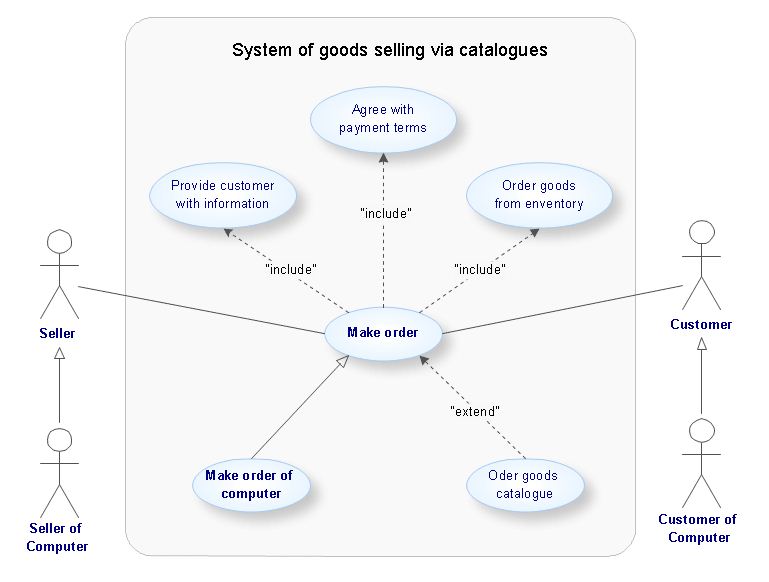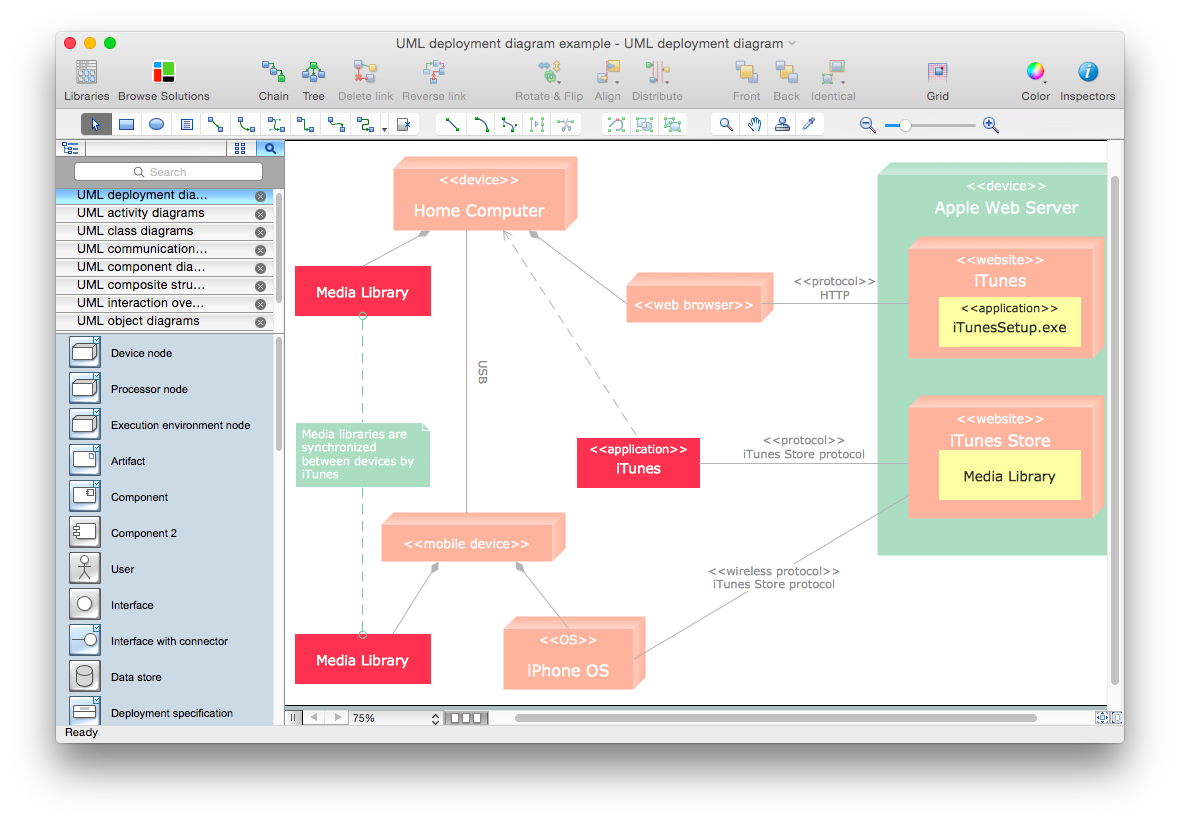ConceptDraw PRO UML Diagrams with ConceptDraw PRO
ConceptDraw PRO is a great UML modeling and design tool that enables you to quickly and easily generate all types of UML diagrams. ConceptDraw PRO offers a large collection of industry-standard UML object libraries for all types of UML diagrams."In software engineering, a class diagram in the Unified Modeling Language (UML) is a type of static structure diagram that describes the structure of a system by showing the system's classes, their attributes, operations (or methods), and the relationships among objects. ...
The class diagram is the main building block of object oriented modelling. It is used both for general conceptual modelling of the systematics of the application, and for detailed modelling translating the models into programming code. Class diagrams can also be used for data modeling. The classes in a class diagram represent both the main objects, interactions in the application and the classes to be programmed." [Class diagram. Wikipedia]
The template "UML class diagram" for the ConceptDraw PRO diagramming and vector drawing software is included in the Rapid UML solution from the Software Development area of ConceptDraw Solution Park.
www.conceptdraw.com/ solution-park/ software-uml
The class diagram is the main building block of object oriented modelling. It is used both for general conceptual modelling of the systematics of the application, and for detailed modelling translating the models into programming code. Class diagrams can also be used for data modeling. The classes in a class diagram represent both the main objects, interactions in the application and the classes to be programmed." [Class diagram. Wikipedia]
The template "UML class diagram" for the ConceptDraw PRO diagramming and vector drawing software is included in the Rapid UML solution from the Software Development area of ConceptDraw Solution Park.
www.conceptdraw.com/ solution-park/ software-uml
HelpDesk
How to Make a UML Diagram in ConceptDraw PRO
The Unified Modeling Language™(UML) is a standard visual modeling language to document business processes and software architecture. UML uses several types of diagrams including Use Case Diagrams, Class, Package, Component, Composite Structure Diagrams, Deployments, Activities and Interactions. The accepted standard used when modeling a system is known as Unified Modeling Language (UML), a generic set of notations that are used when creating UML diagrams. These notations can visually represent requirements, subsystems, logical and physical elements, and structural and behavioral patterns, that are especially relevant to systems built using an object-oriented style. Using UML during the modeling process has a number of benefits — for one, the entire development team can share information and collaborate using common language, diagrams and software, something that's not possible when using a more task-specific programming language. It allows team members to create system 'blueprin
- Business Process Modeling with ConceptDraw | UML Business ...
- UML Sample Project | UML 2 4 Process Flow Diagram | UML Use ...
- UML Notation | Business Process Modeling with ConceptDraw ...
- UML Diagram | Unified Modeling Language Diagram | Design ...
- UML Diagrams with ConceptDraw PRO | Business Process ...
- Business Process Modeling with ConceptDraw | UML Business ...
- UML Class Diagram Generalization Example | Rapid UML | UML ...
- UML Business Process | Business Process Modeling with ...
- UML Activity Diagram | Diagramming Software for Design UML ...
- UML Diagram | Rapid UML | UML Use Case Diagrams | Uml ...
- UML Notation
- Business Process Modeling Notation Template | Business Process ...
- UML Diagram | Unified Modeling Language Diagram | UML ...
- Rapid UML | Introductory Guide to Rapid UML Solution | UML ...
- Rapid UML | Total Quality Management with ConceptDraw | Data ...
- Business Process Modeling with ConceptDraw | UML Diagrams with ...
- Rapid UML | ConceptDraw Solution Park | UML Diagram of Parking ...
- UML Diagram | Unified Modeling Language Diagram | ConceptDraw ...
- UML Diagram | Unified Modeling Language Diagram | ConceptDraw ...
- UML Diagram | Unified Modeling Language Diagram | Design ...


